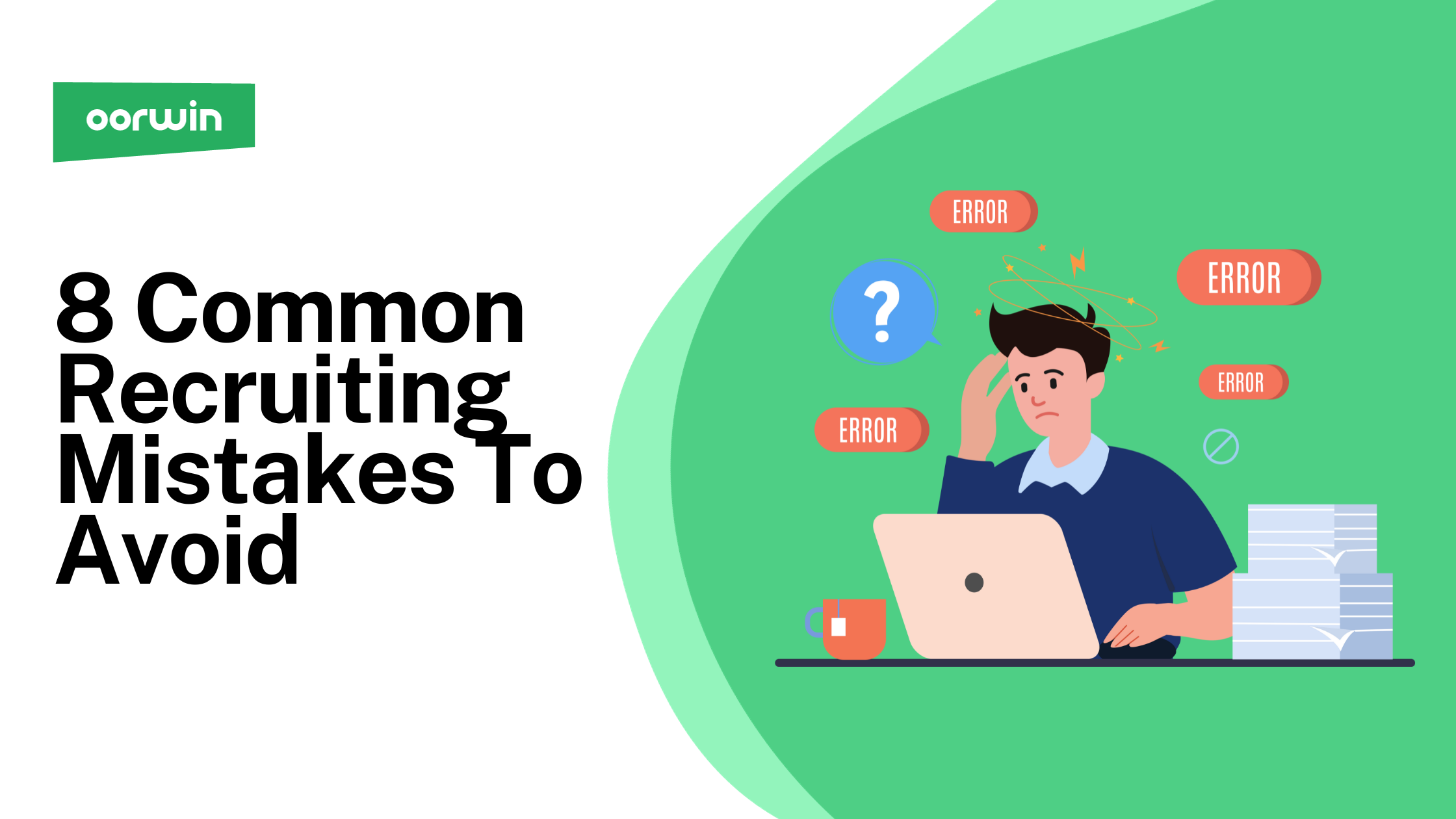Solving Modern Hiring Challenges: Strategic Approaches for Successful Recruitment
The recruitment field has seen considerable shifts, thanks to rapid technological progress. Today, recruiters, hiring managers, and their teams face persistent challenges in drawing in suitable candidates and effectively engaging them for successful hires.
If you’re among those in the recruitment sector facing such hurdles, you’re not alone. Wondering how to tackle these issues?
This blog is your go-to resource. We’ll delve into the common challenges in recruitment and arm you with proven practices and strategies to surmount these obstacles, ensuring your recruitment efforts are as effective as they can be.
What are Hiring Challenges?
Employers encounter new challenges in recruitment as the job market progresses. Hiring challenges are employers’ obstacles and difficulties when recruiting and hiring qualified candidates for open positions. These challenges can take many forms, such as a shortage of skilled workers, a highly competitive job market, or a lack of diversity and inclusion in the hiring process.
Rapid technological change and evolving job market trends also contribute to these challenges. Employers must overcome these hiring challenges to attract and retain top talent and build a thriving workforce to drive organizational growth and success.
The recruitment process is an intricate journey that recruiters navigate alongside candidates, encountering numerous obstacles at each stage. These hiring problems define the essence of recruitment challenges.
If you’re gearing up to initiate a hiring process, it’s crucial to be informed about these potential recruitment challenges and prepare to tackle them in advance.
10 Biggest Recruitment Challenges Faced By Recruiters in 2024
The job market constantly evolves, so employers face new hiring problems in 2024. This article will explore the most common hiring challenges employers encounter and discuss strategies to overcome them.
Finding Quality Candidates
In today’s highly competitive job market, one of the foremost challenges employers face is locating high-quality candidates possessing the desired skills and experience. With a limited workforce and intense competition, many employers face difficulty engaging candidates who are not actively seeking employment opportunities.
Attracting the Right Talent
Identifying the right candidate for a position is often a challenging and time-consuming task, creating a significant hiring problem.
When searching for the right individual in a pool of underqualified applicants, options seem scarce, leading to the compromise of choosing the “best available” candidate rather than the “best fit” for the job. To circumvent this issue, it’s advisable to focus on creating a smaller pipeline of highly qualified candidates instead of aiming for a larger volume of applications.
Diversity and Inclusion in Hiring
Diversity and inclusion have become critical issues for employers in recent years. Employers must ensure that their hiring practices are impartial and non-discriminatory and actively promote diversity and inclusion within their organizations. This is especially important in addressing the issue of companies needing more employees from diverse backgrounds, which can limit creativity, innovation, and overall organizational success.
The Impact of Technology
While technology has helped employers streamline their recruitment processes, make more data-driven decisions, and improve candidate engagement, there are potential drawbacks such as algorithmic bias, overreliance on automation, and the risk of excluding qualified candidates without access to specific technologies. Employers must balance utilizing technology to enhance hiring processes while avoiding unintended consequences or exclusionary practices.
Skills Gap and Training
Finally, employers must address the skills gap and invest in employee training and development. With rapid technological advances and a constantly evolving job market, it can take time for employees to keep up with the skills needed for their roles.
Mobility in an Unpredictable Job Market
Providing mobility in an uncertain job market poses a hiring challenge for HR professionals and hiring teams. With employees gravitating towards internal mobility or gig work, developing innovative career progression strategies becomes essential to meet the evolving needs and aspirations of the modern workforce. Adaptability and creativity in addressing this challenge will be crucial to attracting and retaining top talent in an ever-changing job landscape.
Preferences of the Gen Z Demographic
As the number of Gen Z workers continues to rise, businesses face recruitment challenges in 2024, adapting their practices to attract this new talent pool. Gen Z, with their tech-savviness and preference for digital connectivity, expects workplaces that prioritize digital collaboration and communication. To address this, businesses need to upgrade their tech infrastructure, implement digital-first workplace communications and training, and streamline the application process to be mobile-friendly and user-friendly. Embracing AI chatbots, interview software, and mobile integration capabilities can help meet these expectations and improve the applicant experience.

Minimizing Hiring Time
Efficient recruiters aim to fill open positions quickly, understanding that vacancies can lead to financial losses and operational delays. However, some sectors experience extended hiring timelines, causing frustration among recruitment professionals.
Often, these delays stem from a scarcity of qualified candidates, leaving hiring teams in a difficult position as potential hires accept offers elsewhere. This predicament is a well-recognized hiring challenge in the recruitment process.
Handling Recruitment Data
The use of data and metrics plays a pivotal role for recruiters in enhancing the hiring process and making decisions based on evidence. The accumulation and analysis of candidate and client data, though critical, come with their own set of challenges.
Managing this information often involves labor-intensive tasks, such as the manual upkeep of spreadsheets, which not only demands significant time and effort but also poses a high risk of inaccuracies. These hiring problems can obstruct recruiters’ ability to effectively monitor data and discern emerging trends, making the task of data management in recruitment both crucial and
Addressing Candidate Attrition
A prevalent hiring problem in the recruitment process is candidate drop-off, where individuals unexpectedly disengage during interviews or shortly after joining a job, sometimes leaving within just a few days. Such attrition proves to be expensive for staffing and recruitment agencies. It not only damages their relationships with clients but also results in a loss of the resources and effort invested in sourcing and securing the candidate.
How to Overcome the Hiring Challenges
To overcome the hiring challenges, employers need to focus on the following strategies:
Emphasizing Company Culture
Employers must promote their company culture and values to attract top talent. By highlighting their commitment to employee development and providing a clear career path. Employers can attract candidates looking for more than just a salary.
Offering Competitive Compensation Packages
Offering competitive compensation packages is a crucial strategy for attracting and retaining top talent. Employers must ensure that their compensation packages align with industry standards and are competitive with other employers in the same market.
This can encompass the base salary and the benefits packages, including health insurance, retirement plans, and paid time off. Employers can attract top talent, reduce employee turnover, and increase employee loyalty by offering competitive compensation.
Removing Bias while Selecting Candidates
Bias in recruiting can be a significant barrier to attracting diverse and talented candidates. Employers need to take proactive steps to remove bias from their recruiting processes. This can include using blind resume screening, which removes identifying information from resumes before being reviewed, and diverse interview panels with individuals from different backgrounds and perspectives. Employers should also ensure that their job postings are inclusive and not inadvertently use language that could discourage particular groups from applying.
Providing Employee Development Opportunities
Investing in employee development opportunities is crucial for addressing the skills gap and promoting a culture of continuous learning. Employers must provide training and development programs that help employees develop the skills they need to succeed in their roles and advance their careers. This can include on-the-job training, mentorship programs, and continuing education opportunities. Employers can address the skills gap and increase employee engagement and loyalty by investing in employee development.
Offering Flexible Work Arrangements
To meet the evolving needs of their employees, employers should consider providing flexible work arrangements such as remote work options, flexible schedules, and job sharing. This trend is becoming popular, particularly after the COVID-19 pandemic, as more employees seek to balance their personal and professional responsibilities.
Remote work has become an essential aspect of flexible work arrangements. Many employers have adopted a hybrid model that allows employees to work from home for a portion of the week. This can help employees avoid long commutes, save on transportation costs, and balance their work and personal responsibilities more effectively.
Leveraging AI-powered Tools for Recruitment
AI-powered recruitment tools have revolutionized how employers identify and engage with top talent. By automating certain aspects of the recruitment process, such as resume screening and candidate outreach, these tools enable recruiters to concentrate on establishing connections with candidates.
AI-powered recruitment tools can also help identify patterns in candidate data to predict which candidates are more likely to succeed in a particular role or fit with the company’s culture. By leveraging AI-powered tools, employers can streamline their recruitment processes and increase their chances of finding the best candidate for the job.

Using Data Analytics to Inform Hiring Decisions
In addition to AI-powered tools, employers should use data analytics to inform their hiring decisions. By tracking key metrics such as time-to-hire and cost-per-hire, employers can identify areas for improvement and make data-driven decisions to improve their recruiting processes.
Data analytics can also help employers measure the effectiveness of their recruitment strategies and adjust their approach as needed. For example, if data analytics reveals that a job board is not delivering high-quality candidates, the employer can change their strategy and focus on other recruitment channels.
Streamline Your Hiring Process with Oorwin’s AI-Powered Recruitment Software
Recruiters face diverse challenges in attracting the right talent, unaffected by economic conditions or job market dynamics. Incorporating contemporary methods, such as leveraging social media and participating in job fairs, can significantly enhance recruitment efforts.
Overcoming these obstacles is more feasible by adopting advanced technologies and tools like Oorwin’s Applicant Tracking Systems (ATS) and Recruitment CRM Software. Equipping your hiring team with the knowledge to effectively use these tools can vastly streamline the recruitment process.
Interested in how to make this possible?
If you’re aiming to navigate through recruitment challenges efficiently, your search ends here. Schedule a free demo with us.
Discover how Oorwin’s AI-powered recruitment software can revolutionize your hiring workflow, from attracting potential candidates to securing the most fitting talent swiftly and efficiently. Give another option.
Frequently Asked Questions
How can a company enhance the candidate experience during the hiring process?
To enhance the candidate experience during the hiring process, companies can focus on personalized communication, timely feedback, and transparent recruitment processes.
What are some effective retention strategies for employers?
Effective retention strategies for employers include:
- Offering competitive compensation and benefits packages.
- Providing opportunities for career development and advancement.
- Promoting a positive work-life balance.
- Creating a culture of recognition and appreciation.
How can technology be used to improve the hiring process in 2024?
Technology can improve the hiring process in 2024 by automating certain aspects of recruitment, leveraging data analytics and AI-powered tools to identify and engage with top talent, and ensuring that technology does not lead to unintended consequences or exclusionary practices.




